ZHCSGB7A June 2017 – November 2017 OPA1641-Q1 , OPA1642-Q1
PRODUCTION DATA.
6.6 Typical Characteristics
at TA = 25°C, RL = 2 kΩ connected to midsupply, and VCM = VOUT = midsupply (unless otherwise noted)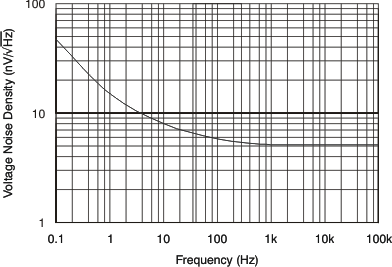
Figure 1. Input Voltage Noise Density vs Frequency
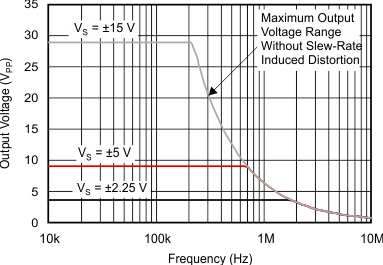
Figure 3. Maximum Output Voltage vs Frequency
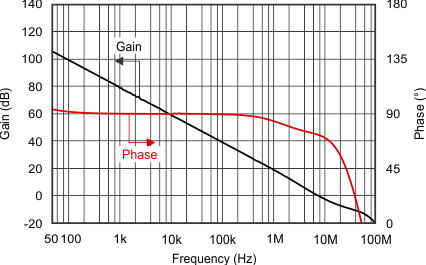
Figure 5. Gain and Phase vs Frequency
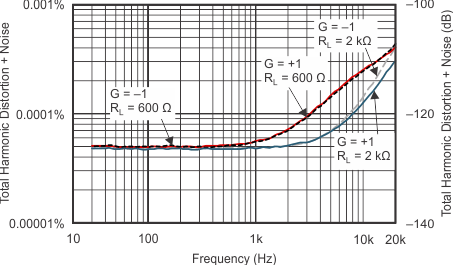
| VOUT = 3 VRMS | BW = 80 kHz |
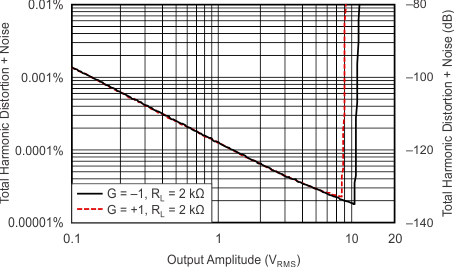
| BW = 80 kHz | 1 kHz Signal | RSOURCE = 0 Ω |
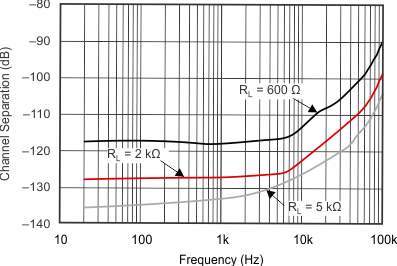
| VS = ±15 V | VOUT = 3 VRMS | G = 1 |
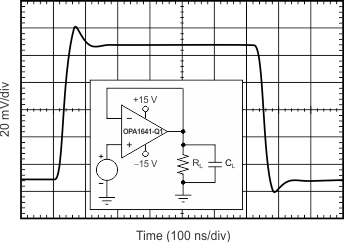
| G = 1 | CL = 100 pF |
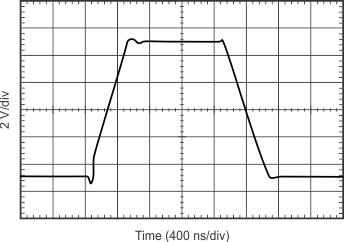
| G = 1 | CL = 100 pF |
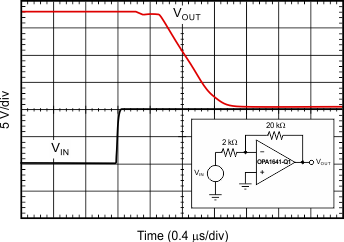
| G = –10 |
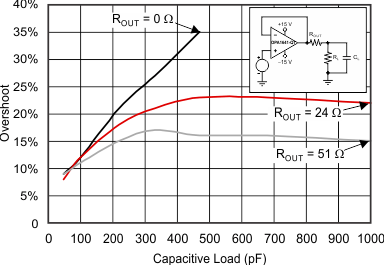
| G = 1 |
(100-mV Output Step)
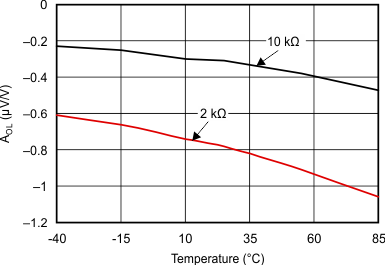
Figure 21. Open-Loop Gain vs Temperature
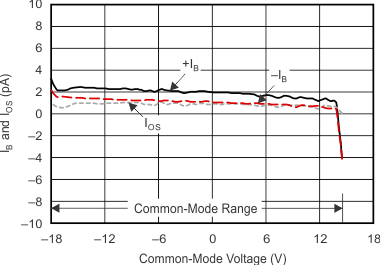
| VS = ±18 V |
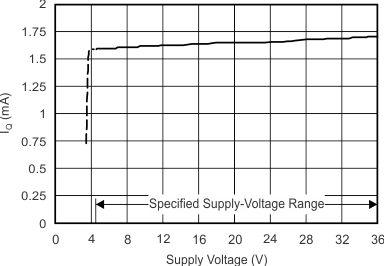
Figure 25. Quiescent Current vs Supply Voltage
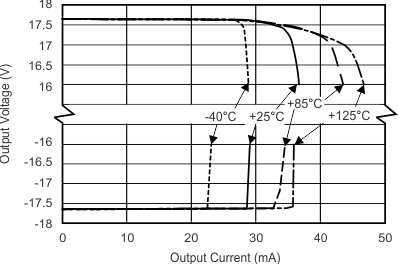
Figure 27. Output Voltage vs Output Current
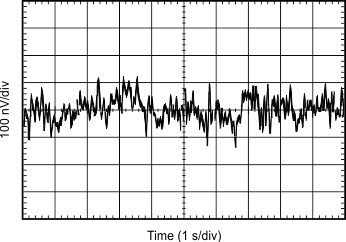
Figure 2. 0.1-Hz to 10-Hz Noise
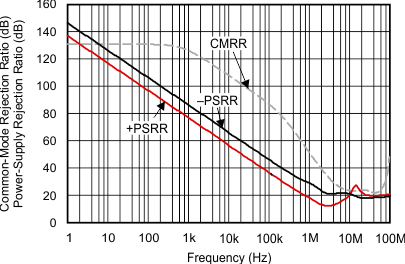
Figure 4. CMRR and PSRR vs Frequency
(Referred to Input)
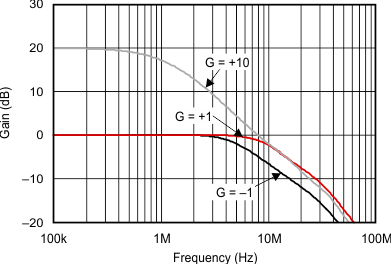
Figure 6. Closed-Loop Gain vs Frequency
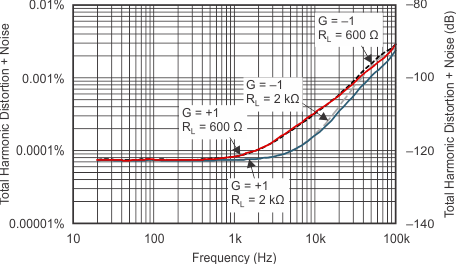
| VOUT = 3 VRMS | BW > 500 kHz |
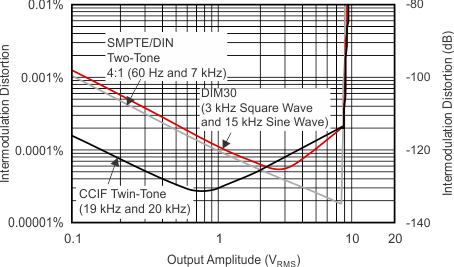
| G = 1 |
vs Output Amplitude
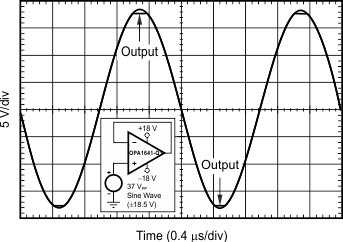
Figure 12. No Phase Reversal
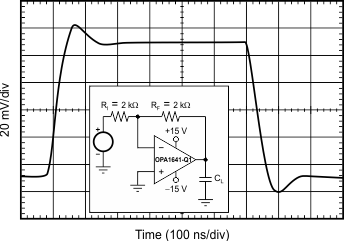
| G = –1 | CL = 100 pF |
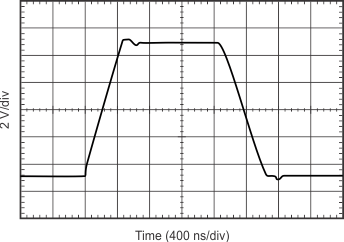
| G = –1 | CL = 100 pF |
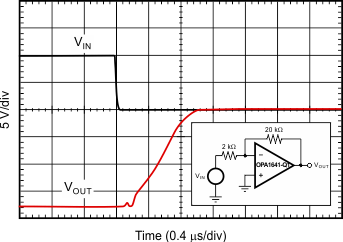
| G = –10 |
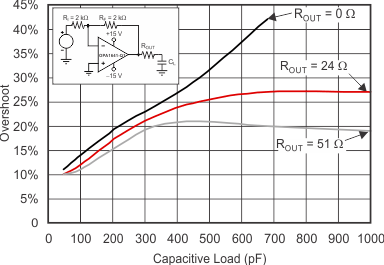
| G = –1 |
(100-mV Output Step)
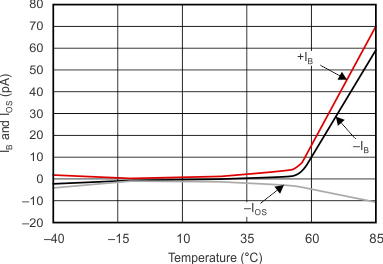
Figure 22. IB and IOS vs Temperature
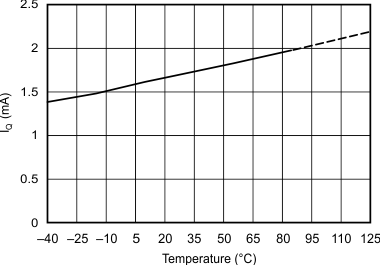
Figure 24. Quiescent Current vs Temperature
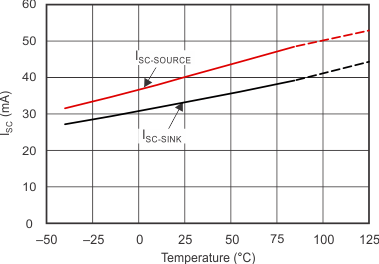
| VOUT = Midsupply (includes self-heating) | ||
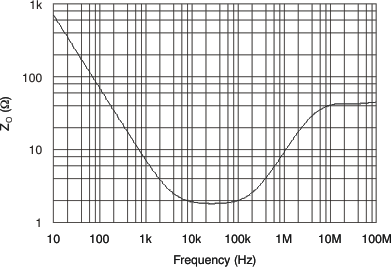
Figure 28. Open-Loop Output Impedance vs Frequency